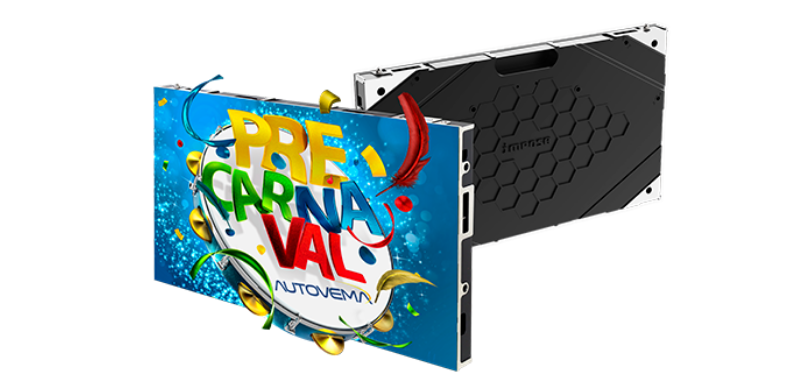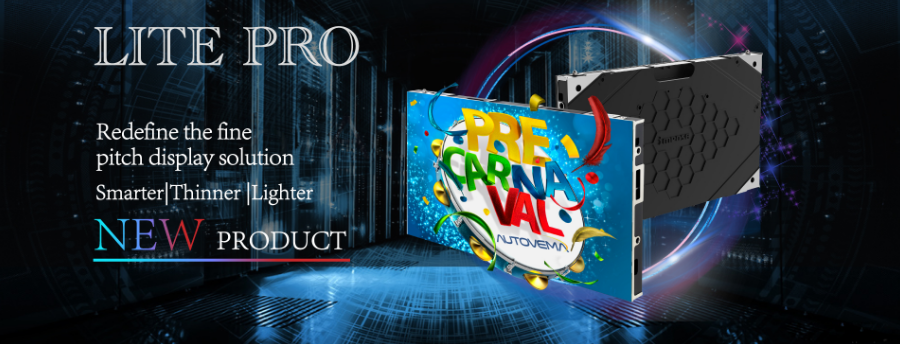2024 Complete Guide To Transparent LED Screens
1. What is a Transparent LED Screen?
A transparent LED display, as the name suggests, possesses the property of transmitting light similar to glass. Its realization principle involves micro-innovations in the light bar screen, targeted improvements in the patch manufacturing process, lamp bead packaging, and control system. The hollow design of the structure reduces blockage to the line of sight, significantly enhancing the perspective effect and seamless integration with the surrounding environment.
Simultaneously, it delivers a novel and unique display effect. When observed from an optimal distance, the picture appears to be suspended on the glass curtain wall. Transparent LED screens have broadened the application scope of LED displays, particularly in the architectural glass curtain walls and commercial retail windows sectors, marking a new trend in new media development.
The transparent LED screen represents a cutting-edge ultra-transparent LED display technology, boasting a transmittance rate of up to 70%. The LED unit panel can be installed close to the glass from the back, allowing for customization according to the glass size. This design not only minimizes the perspective effect on the glass curtain wall but also facilitates convenient installation and maintenance.
2. The Characteristics of LED Transparent Screen
1) High Transparency
The LED transparent screen is characterized by high transparency, often exceeding 60%. This implies that, even when installed, the audience can still clearly perceive the landscape behind it without complete obstruction by the screen. This elevated transparency enhances immersion, providing the audience with a more realistic visual experience.
2) Simple Structure and Lightweight
The transparent LED display incorporates a hollow strip design. In comparison to traditional LED display cabinets, its structure is more flexible. The cabinet size can be customized to match the specific dimensions of the glass, ensuring a better fit onto the glass curtain wall and reducing the load-bearing pressure.
3) Easy and Fast Maintenance
The transparent LED screen features a flexible and lightweight structure, making installation quick and efficient. In case of damage to a specific LED light bar, only that individual bar needs replacement, eliminating the need to replace the entire module. Maintenance can be performed indoors, ensuring high efficiency and cost-effectiveness.
4) Simple Operation and Strong Controllability
The transparent LED screen can be connected to a computer, graphics card, and remote transceiver through a network cable. Additionally, it can be wirelessly controlled via a remote cluster, allowing for real-time changes to the display content.
5) Green Energy Saving and Excellent Heat Dissipation Performance
Thanks to its high transparency, lack of noise, and low power consumption, the transparent LED display requires no auxiliary heat dissipation equipment. It efficiently dissipates heat naturally, harnessing wind force to contribute to its eco-friendly and energy-saving attributes.
3. Application of Transparent LED Display
1) Stage Beauty
Outdoor LED transparent screensoffer versatile construction possibilities, adapting to different stage shapes. Leveraging the transparent, lightweight, and thin attributes of the screen body, they create a compelling perspective effect, extending the overall picture's depth of field. Importantly, this design doesn't impede stage aesthetics, allowing space for hanging and utilizing lighting elements. This enhances the stage atmosphere, adds dynamism, and effectively communicates the intended theme.
2) Mall
The contemporary artistic allure of the indoor transparent led display seamlessly integrates with the shopping mall environment, presenting vast potential for applications in shopping malls and glass partitions.
3) Glass Window
Transparent LED displays have transformed the retail landscape, gaining popularity in diverse settings like building facades, glass window embellishments, and interior decor.
4) Architectural Glass Curtain Wall
In recent years, the utilization of transparent LED displays in architectural glass curtain wall buildings has seen a notable rise in popularity. Various solutions, including glass curtain walls and LED transparent sky curtains, have emerged to meet this growing demand.
5) New Retail
In recent years, the rapid expansion of the digital signage industry, particularly in retail, has been driven by the "new retail" concept. LED transparent screens have played a crucial role in various fields such as commercial retail windows, interior decoration, and building facades, ushering in significant changes to the landscape of new retail. Recognizing the importance of store window displays as a key method for retail promotion, the emergence of new retail is poised to propel the growth of the commercial display market. Simultaneously, it creates a substantial incremental market for LED displays.
4. LED Transparent Screen Installation Method
The installation of transparent screens is notably more convenient compared to common cabinet display screens. Transparent screens are generally lighter, thinner, and feature a more streamlined structure. Here are various installation methods for transparent screens in different scenarios:
1) Floor-Standing Base
This method is commonly employed in glass showcases, exhibition halls, and similar settings. For screens with lower height, a simple bottom fixation suffices. In cases where the screen is taller, it requires top and bottom fixation at the rear for secure positioning.
2) Frame Installation
Composite bolts are utilized to directly secure the box frame onto the keel of the glass curtain wall. This method, which doesn't require a steel structure, is primarily applied in architectural glass curtain walls.
3) Ceiling Installation
Ideal for indoor long screens and frame structures, this method allows for hoisting. Installation requires a suitable location, such as a place with a beam above the lintel. For indoor concrete roofs, standard hanging parts can be used, with the length of the hanging parts determined by site conditions. Indoor beams are hoisted using steel wire ropes, while outdoor installations utilize steel pipes matching the screen body's color.
4) Hanging Installation
Indoor installations can be wall-mounted, requiring concrete beams in the wall or suspension. Outdoor installations rely on steel structures, offering flexibility in screen area and weight.
If you want to know more information about indoor and outdoor transparent led display, please click on the image below to get a free quote:










Leave a comment